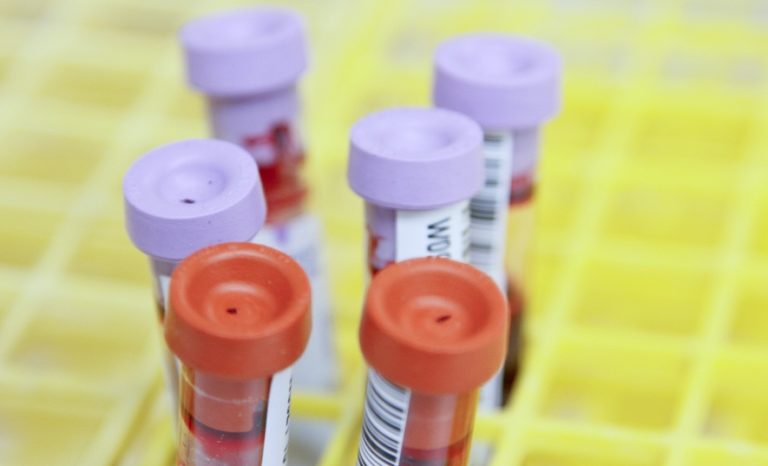April 27, 2020: “The U.S. Food and Drug Administration issued ten warning letters to retailers and manufacturers who sell, manufacture and/or import unauthorized electronic nicotine delivery system (ENDS) products targeted to youth or likely to promote use by youth.
The warning letters were sent to establishments marketing unauthorized products, such as a backpack and sweatshirt designed with stealth pockets to hold and conceal an e-cigarette, ENDS products that resemble smartwatches, or devices appearing as children’s toys such as a portable video game system or fidget spinner.
Warning letters were also issued to companies marketing e-liquids that imitate packaging for food products that often are marketed and appeal to youth, such as candy, or feature cartoon characters like SpongeBob SquarePants.
These warning letters are part of the FDA’s ongoing enforcement efforts against ENDS and other deemed tobacco products illegally on the market.
The warning letters are also in line with the agency’s stated enforcement priorities against any ENDS product targeted to youth or likely to promote use by youth.
If the recipients of these warning letters do not cease the manufacture, distribution and/or sale of these unauthorized tobacco products, they risk additional FDA action such as an injunction, seizure and/or civil money penalty actions.
“The FDA is focused on manufacturers and retailers that make and sell ENDS products that are targeted to youth and increase their appeal. The public should really be outraged by these products.
The FDA is especially disturbed by some of these new products being marketed to children and teens by promoting the ease with which they can be used to conceal product use, which appeals to kids because it allows them to conceal tobacco product use from parents, teachers, law enforcement or other adults,” said Mitch Zeller, J.D., director of the FDA’s Center for Tobacco Products.
“Even in the midst of the COVID-19 pandemic, we have not lost our focus on protecting youth against the dangers of e-cigarettes and will do everything we can to take action.
These warning letters should send a clear message to all tobacco product manufacturers and retailers that the FDA is keeping a close watch on the marketplace. If you’re marketing or selling these products to youth, the FDA will not tolerate it.”
The following retailers and/or manufacturers or importers received a warning letter:
- Vaprwear Gear, LLC (manufacturer, online retailer)
- Vapewear, LLC (manufacturer, online retailer)
- Wizman Limited (manufacturer, online retailer)
- EightCig, LLC (online retailer)
- Ejuicepack, LLC (online retailer)
- Vape Royalty, LLC (online retailer)
- VapeCentric, Inc. (online retailer)
- Dukhan Store (online retailer)
- VapeSourcing (online retailer)
- Shenzhen Uwell Technology Co., Ltd. d/b/a DTD Distribution Inc. (importer, retailer)
These products appeal to youth in the way they are designed and labeled. For example, Vaprwear Gear’s pullover and backpack products hold pod systems that deliver vapor through hosing discreetly woven through hidden pockets.
This design allows the products to be used for vaping without raising the attention of parents, teachers or other adults.
Similarly, the Vapewear vWaTch Starter Kit, Wizman Puff Boy Mod and VooPoo Rota 340mAh Pod System Kit look like products that are popular with kids, such as smartwatches, video game systems and fidget spinners, that can be carried or worn without revealing they are tobacco products.
Under the Federal Food, Drug, and Cosmetic Act (FD&C Act), all these products are considered tobacco products because they are made or derived from tobacco and intended for human consumption or components or parts of such products
The FDA has also issued warning letters to 73 brick-and-mortar retailers for selling unauthorized flavored, cartridge-based ENDS products.
This follows 22 warning letters that FDA issued last month for similar violations to online and brick-and-mortar retailers and manufacturers across the country.
These warning letters are part of a series of ongoing actions consistent with the FDA’s recently issued policy of enforcement priorities for e-cigarettes and other deemed products on the market.
Last month, in line with the agency’s actions to protect the health and well-being of staff during the COVID-19 outbreak, the FDA issued a partial stop-work order to the entities the agency contracts with at the state level for activities such as compliance checks and vape shop inspections.
The inspections related to the actions announced today occurred before the stop-work order. The FDA continues to evaluate the effect of COVID-19 on its programmatic activities and will continue to communicate any changes as they occur.
Guided by health and safety considerations, the FDA will continue taking appropriate actions, as outlined by its priorities, on a rolling basis.
These warning letters notify the retailers and manufacturers that new ENDS products without a marketing authorization order are adulterated and misbranded, and selling or distributing these products to customers in the U.S. is prohibited under the FD&C Act. Retailers and distributors are encouraged to communicate with their suppliers to discuss possible options for unauthorized products in their inventory.
Additionally, as part of the agency’s efforts, the FDA has issued import alerts for unauthorized tobacco products, including certain unauthorized ENDS products, imported into the U.S. informed by the agency’s enforcement priorities outlined in FDA’s guidance.
Adulterated and misbranded tobacco products offered for import into the United States are subject to detention and refusal of admission.
The FDA has also issued letters to more than 110 companies seeking information about the legal marketing status of more than 140 ENDS products.
Ultimately, manufacturers that intend to continue marketing any deemed, new tobacco product on the market as of Aug. 8, 2016—including ENDS products—must submit an application to the FDA by Sept. 9, 2020 that demonstrates that the product meets the applicable standard in the law, such as whether the product is appropriate for the protection of the public health.
This date was recently extended (from May 12, 2020) due to the impact of the coronavirus pandemic.
As a resource for manufacturers preparing and submitting tobacco product applications for newly deemed products, the FDA recently launched a new webpage to provide a single location for all relevant information, including tips and resources on the application submission processes.
For certain deemed tobacco products, the FDA is already prioritizing its enforcement, as outlined in its guidance on enforcement priorities for ENDS and other deemed tobacco products.
All of these efforts, in addition to enforcement of the new law raising the federal minimum age for sale of tobacco products from 18 to 21 years and the recent expansion of the FDA’s public education campaign to include videos featuring teenagers sharing cautionary tales about their e-cigarette addiction, are aimed at keeping these products out of the hands of youth.
All of these efforts, in addition to enforcement of the new law raising the federal minimum age for sale of tobacco products from 18 to 21 years and the recent expansion of the FDA’s public education campaign to include videos featuring teenagers sharing cautionary tales about their e-cigarette addiction, are aimed at keeping these products out of the hands of youth.
The agency also recently released new resources with ScholasticExternal Link Disclaimer for middle and high-school educators and school administrators.
The materials, which include new lessons, worksheets and videos, are available online for free and are adaptable for virtual learning.
All of these efforts, in addition to enforcement of the new law raising the federal minimum age for sale of tobacco products from 18 to 21 years and the recent expansion of the FDA’s public education campaign to include videos featuring teenagers sharing cautionary tales about their e-cigarette addiction, are aimed at keeping these products out of the hands of youth.
The agency also recently released new resources with ScholasticExternal Link Disclaimer for middle and high-school educators and school administrators.
The materials, which include new lessons, worksheets and videos, are available online for free and are adaptable for virtual learning.
The FDA continues to monitor youth use of all e-cigarette products and will continue to expand its public education efforts and use the agency’s regulatory authority—changing course as necessary—to further ensure all tobacco products, and e-cigarette products, in particular, are not marketed to, sold to, or used by youth.
The FDA, an agency within the U.S. Department of Health and Human Services, protects the public health by assuring the safety, effectiveness, and security of human and veterinary drugs, vaccines and other biological products for human use, and medical devices.
The agency also is responsible for the safety and security of our nation’s food supply, cosmetics, dietary supplements, products that give off electronic radiation, and for regulating tobacco products.”











